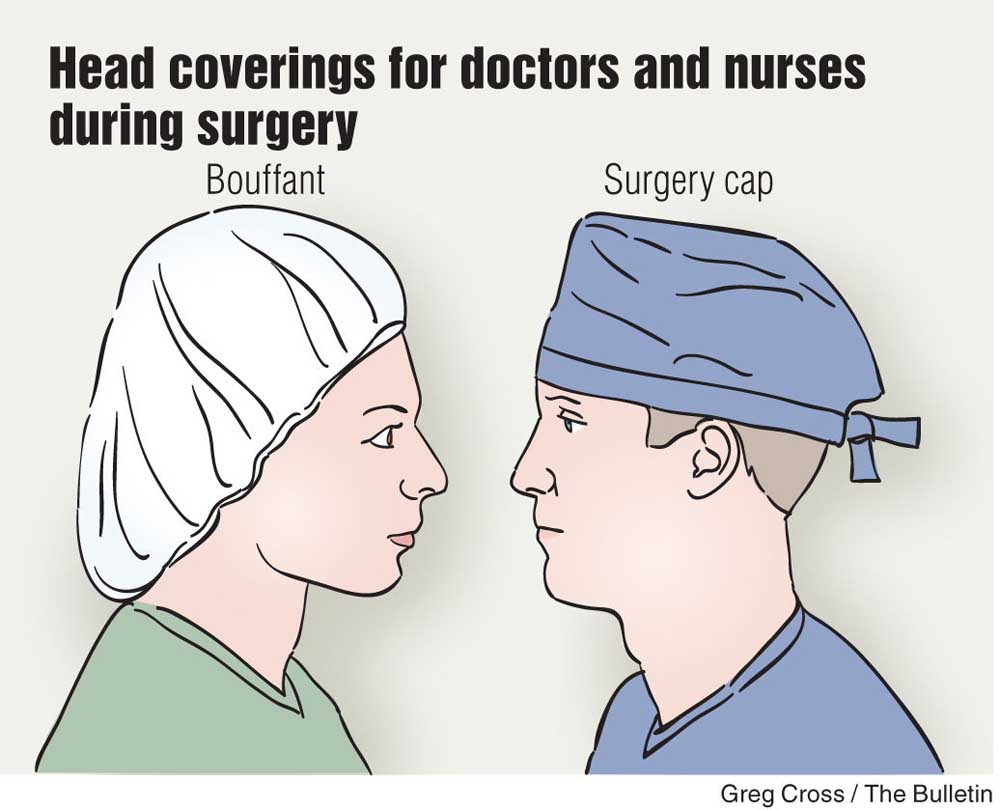Head cover debate roils surgeons
Published 12:00 am Thursday, September 15, 2016

- Head cover debate roils surgeons
The difficulty of coming to a consensus on matters of clinical medicine has left the field of medicine rife with debates. But the current spat between two professional organizations regarding the best way for surgeons and nurses to cover their hair has left many scratching their heads.
“This is a really silly spat,” Bend anesthesiologist Dr. Scott LeTourneau said.
Trending
The skirmish began when the American Association of periOperative Nurses updated its surgical attire recommendations for 2016, recommending that all surgical personnel wear shower-cap style bouffant head coverings that more completely cover the head and ears than the skull caps surgeons have traditionally worn.
The American College of Surgeons fired back in early August, defending the surgeon’s cap as “symbolic of the surgical profession.” Headwear decisions, the surgeon groups said, should be based on “professionalism, common sense, decorum and the available evidence.”
The surgical nurses responded in mid-August with a point-by-point rebuttal of the surgeons’ statement, arguing that choosing headwear for its symbolism is not evidence-based and should not be a basis for a nation practice recommendation.
It may be difficult for the two sides to resolve their differences because of the lack of any scientific analysis showing that one type of surgical head cover is better at protecting against infections than any other type.
“I seriously doubt the benefit of one surgical hat over another, and think it would be exceedingly difficult to prove as there are too many variables,” said Dr. Brad Ward, a neurosurgeon with The Center Orthopedic & Neurosurgical Care & Research in Bend.
Few studies have considered the correlation between surgical attire and surgical site infections, although surgical infection outbreaks have been traced to hair or scalp organisms, according to one recent review of the evidence.
Trending
Still, even the use of surgical scrubs, caps and shoe covers remains more a matter of common sense than rigorous scientific study.
Those have never been definitively shown to reduce surgical sites infection. Such studies would be difficult to conduct and might need to involve hundreds of thousands of patients to find even a slight reduction in infections during surgery caused by bacteria-tainted hair or skin falling onto the patient.
“What’s the risk of infection? It’s pretty low from that source,” said Dr. Andrew Jones, a surgeon with Inovia Vein Specialty Center in Bend. “If you think about infectious disease in the OR as a topic, it’s such a little thing. I don’t know why people get worked up about it.”
Jones wears a bouffant during surgery, feeling the surgical caps he had during training never quite fit him right.
Currently, St. Charles allows doctors and nurses to go with their preference and provides disposable versions of both types of head covers outside their operating rooms. Several years ago, the hospital asked surgical personnel to switch to disposable head coverings over cloth hats that were laundered at home. Many doctors and nurses liked to wear personalized cloth surgical caps, displaying the logos of their alma maters or their favorite sports teams. But hospital officials couldn’t be sure those were being cleaned adequately for use in an operating room.
“They can still wear cloth hats,” said Jen Oulman, senior director for surgical services at St. Charles Health System in Bend. “But we require that they’re covered.”
Hospital officials are now waiting for the two groups to find some common ground on their recommendations and expect further guidance from the Centers for Medicare & Medicaid Services and the Joint Commission for Accreditation of Health Organizations on the matter.
“We all want to make sure we do the best thing for the patients,” Oulman said. “But we want to make sure it’s evidence-based.”
Dr. Tim Bollom, an orthopedic surgeon at The Center, said most doctors are amenable to whatever head covering limits the risk of infections, but without proof of clear benefits, most are deciding based on what covers their hair better.
“Take a guy like me who is eventually going to go bald and wears his hair very short,” he said. “A surgical cap covers every bit of hair on my head.”
Those with longer hair may not have that option.
“I have had to tell employees over the years that their hair was not being adequately covered by cap and they needed to switch to a bouffant,” LeTourneau said. “But, it seems to me, as long as a person’s hair is adequately contained, the type of cap does not matter.”
While surgeons have traditionally worn surgical caps, Oulman said that’s changed based on the changing demographics in the operating room.
“It’s more based on hair length,” Oulman said. “You’ve got more male nurses in the field. We’ve got more female surgeons.”
Dr. Mike Ryan, an orthopedic surgeon with Desert Orthopedics, wears both a cap and a bouffant during surgery, but not because he’s convinced there’s a clear cut benefit.
“Scientific — no,” he summarized. “Habit — yes.”
— Reporter: 541-633-2162, mhawryluk@bendbulletin.com








